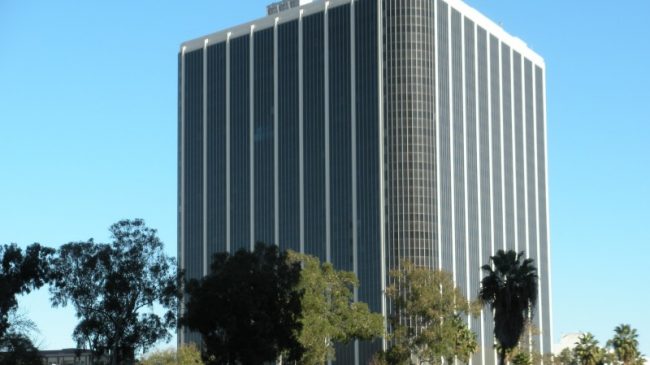Today, Reason Foundation released a study of Los Angeles Unified School District (LAUSD) finances. We find that the nation’s second-largest school district faces insolvency largely because its steep legacy costs are being spread across a shrinking student population. With state funding dependent on average daily attendance at LAUSD schools, the district’s revenue falls as students leave the district or skip classes. This reduced funding must be stretched ever further to pay a variety of fixed costs, including unfunded pension obligations and retiree health care expenditures.
Like all California school districts, LAUSD is facing rising employer pension contribution rates. For certificated employees, the rate increases are the result of 2014 state legislation intended to address underfunding at the California State Teachers’ Retirement System (CalSTRS) Under the law, employer contribution rates are rising from 8.25 percent in 2013 to 19.10 percent in 2020. After 2020, we expect the rate to remain at or near a legal cap of 20.25 percent unless the legislature is obliged to remove the cap due to continued underfunding.
Pension contribution rates are also rising for non-teaching employees who belong to the California Public Employees’ Retirement System (CalPERS). CalPERS school employer contribution rates rose from 11.42 percent in 2013 to 15.53 percent currently, and system actuaries project that they will exceed 25 percent in 2023 (CalPERS rates are higher for school safety employees, but they account for a relatively small portion of the workforce).
CalPERS and CalSTRS rate increases are beyond the district’s control: they are set at the state level. But the district can lower overall pension costs by reducing administrative staff, which has been growing despite a declining student population. LAUSD most recently reported an administrator-to-teacher ratio of 8.52 per 100, exceeding the maximum of 8 per 100 set by state law.
LAUSD has more flexibility to address its Other Post Employment Benefit (OPEB) costs which are projected to rise from $306 million this year to $450 million by 2023. Relative to other large California districts, LAUSD has generous retiree health benefits —paying the full health insurance premiums for eligible employees and dependents. This contrasts with San Diego Unified which provides a limited premium subsidy and Oakland Unified which does not offer any employer-paid retiree health benefits.
Since OPEBs are not protected by the California rule – which treats pension benefits rules as a property right for public employees – the district has the option to reduce or eliminate them. Any reduction in OPEB costs could go directly to improving educational outcomes or balancing the district’s budget.
While many blame the growth of charter schools for LAUSD’s fiscal distress, we can see that at least some of the district’s problems are self-inflicted. As explained in detail here, they can be addressed by better aligning headcount and benefit policies with the interests of students.
Infographic: LAUSD’s Financial Outlook
Stay in Touch with Our Pension Experts
Reason Foundation’s Pension Integrity Project has helped policymakers in states like Arizona, Colorado, Michigan, and Montana implement substantive pension reforms. Our monthly newsletter highlights the latest actuarial analysis and policy insights from our team.

